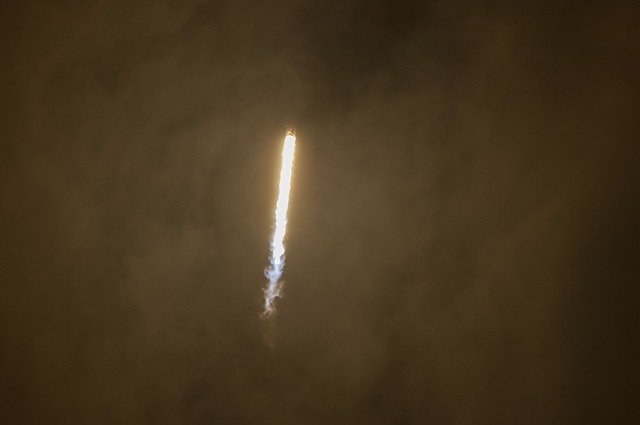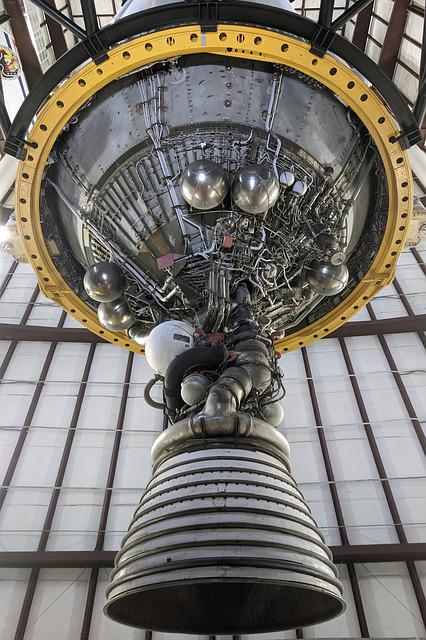What is the math behind rocket propulsion? How does it assist us in getting them to space? And how can we send a satellite or human in orbit around the Earth using that math? Let us investigate.
One of the important things is specific impulse. Specific impulse is a measure of how much mass you can lift with a fixed weight of fuel. These numbers are calculated mathematically, so if you want to calculate them you need to know what kind of fuel you’re using, how much the fuel weighs and how long your rocket will be in the air before it runs out of propellant….
I’ve been fascinated by rockets and all things space-related since I was a child. So the sound of a rocket launch countdown is like music to my ears.
Of course, the sound that follows the countdown is far from melodic because rockets are extremely loud… but did you know that sound is one of the things that help launch a rocket?
Contents
Rockets Are Awesome
And they’re magnificent machines that will soon play an increasingly important part in our daily lives as we embark on the trek to becoming a genuinely space-faring species. To top it all off, they’re math-powered machines (and, of course, a bunch of physics and fuel).
When most people consider traveling to space, they envision going up. That is correct, but it is only part of the narrative. It’s difficult to pinpoint where the atmosphere ends, and outer space begins (since the atmosphere continually thins out as altitude increases).
Still, one frequent alternative is the so-called “Karman line” at 100 km (or about 62 miles) above sea level. Many people are astonished to learn that space begins only 100 kilometers above the Earth’s surface… since it’s actually not that far. That is what Bessos Blue Origin’s New Shepard rocket does.
The trouble is that getting there is “uphill” the entire time, which means you have to battle gravity the whole time.
Here’s how to calculate the fuel you need for a rocket.
It’s not an easy equation to calculate because we have to factor in the orbit’s weight and trajectory. But in truth, it’s fantastic that people are able to figure out all that math!
Rocket boosters use a lot of fuel and will continue to do so during liftoff. Around 11,000 pounds of fuel per second will be burned during ascent.
Aerodynamics is a factor in the efficiency of rocket boosters. Blunt nose cones are used to reduce aerodynamic drag and increase efficiency.
The shape of rocket boosters is also an essential factor in their efficiency.
On the other hand, specific impulse is one of the most valuable measurements of a rocket’s efficiency.

Specific impulse (Isp) is a measurement of how much mass a particular fuel system can lift for every pound of fuel burned per second. The fuel that SpaceX uses, methane, is lighter and safer than any other fuel found on Earth. But the specific impulse of methane is not as powerful as that of kerosene.
Also, one difference is that it takes less energy to turn methane into electricity than it does to turn kerosene into electricity.
Applications of Calculus in Rocket Science
Calculus is a field of mathematics that explains how values associated by a function change.
Calculus is used to build everything from rocket nozzles (heat distribution and fuel flow) to calculating launch, cruise, and return trajectories (many-body gravity, frictional forces, and integration of thrust vs. changing mass)….To constructing instruments, tools, modules, and space suits (materials strength, wear characteristics, heat and air distribution, and forces between objects).
Calculus is how we keep our astronauts, spacecraft, and space missions safe and successful.

Coordinate Systems in Space
We’ve all used GPS on our phones or in our cars. GPS uses latitude and longitude to determine your exact location and provide you with the best directions to your destination. Unfortunately, GPS in space is not so straightforward. Instead, the GPS locates a spacecraft in three dimensions by using the coordinates X, Y, and Z in space.
Math is required to determine where one is pointed, where one is heading, and the optimal path of travel.
Finding and calculating the distance between two points in space
How can you determine the distance between planets, stars, and other celestial bodies?
Scientists send radio signals from Earth to a cosmic body to determine its distance. They can choose the distance using arithmetic formulae after they know how long it takes to reach the target and the speed of radio waves.
Mathematics is very crucial in space flight. It allows us to predict what will happen in the future and evaluate what is occurring now to adjust to it. Designers of space vehicles employ math to determine distance, speed, velocity, and safety. For ideal space flight, mathematics serves as a guide, instruction manual, and route map.


